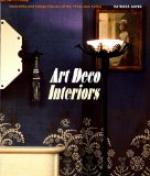That was the great period of tapestry weaving—Beauvais, Arras and Gobelin, and these filled panels or hung before doors.
It may be said that the period of Louis XVI profited by antiquity, but continued French traditions; it was a renaissance of line and decoration kept alive, while the First Empire was classic form inanimate, because an abrupt innovation rather than an influence and a development. One may go farther and quote the French claim that the colour scheme of Louis XVI was intensely suggestive and personal, while the Empire colouring was literal and impersonal.
Under Louis XVI furniture was all but lost in a crowd of other articles, tapestry, draperies of velvet, flowered silks, little objects of art in porcelain, more or less useless, silver and ormoulu, exquisitely decorated with a precieuse intricacy of chiselled designs.
The Louis XVI period was rigid in its aristocratic sobriety, for although torch and arrows figured, as did love-birds, in decoration—(souvenirs of the painter Boucher), everything was set and decorous, even the arrow was often the warrior’s not cupid’s; in the same way the torch was that of the ancients, and when a medallion showed a pastoral subject, its frame of straight lines linked it to the period. Even if Cupid appeared, he was decorously framed or pedestaled.
To be sure, Marie Antoinette and the ladies of her court played at farming in the Park of the Petite Trainon, at Versailles; but they wore silk gowns and powdered wigs. To be rustic was the fad of the day (there was a cult for gardening in England); but shepherdesses were confined to tapestries, and, while the aristocracy held the stage, it played the game of life in gloves.
There was about the interior decoration of Louis XVI, as about the lives of aristocratic society of that time, a “penetrating perfume of love and gallantry,” to which all admirers of the beautiful must ever return for refreshment and standards of beauty and grace.
Speaking generally of the three Louis one can say that on a background of a great variety of wonderful inlaid woods, ivory, shell, mother-of-pearl and brass, or woods painted and gilded, following the Italian Renaissance, or lacquered in the manner of the Orient, were ormoulu wrought and finely chiselled, showing Greek mythological subjects; gods, goddesses and their insignia, with garlands, wreaths, festoons, draperies, ribbons, bow-knots, rosettes and medallions of cameo, Sevres porcelain, or Wedgwood paste. Among the lost arts of that time are inlaying as done by Boule and the finish known as Vernis Martin.
PLATE XX
This large studio is a marked example of comfort and interest where the laws of appropriateness, practicableness, proportion and balance are so observed as to communicate at once a sense of restfulness.
Here the comfortable
antiques and beautifully proportioned modern
furniture make an ideal
combination of living-room and painter’s
studio.




